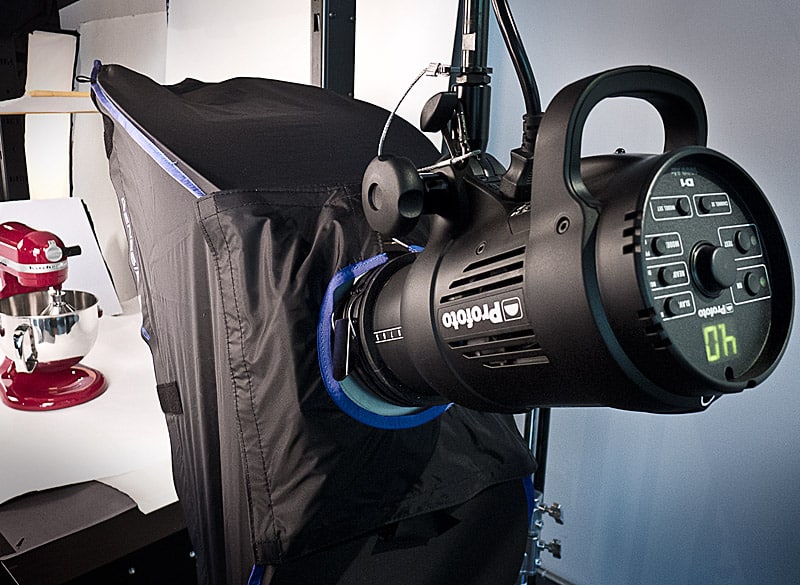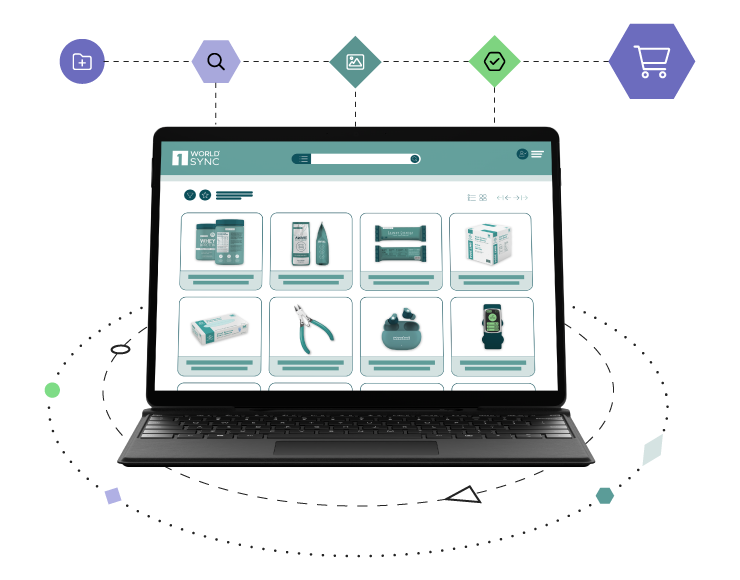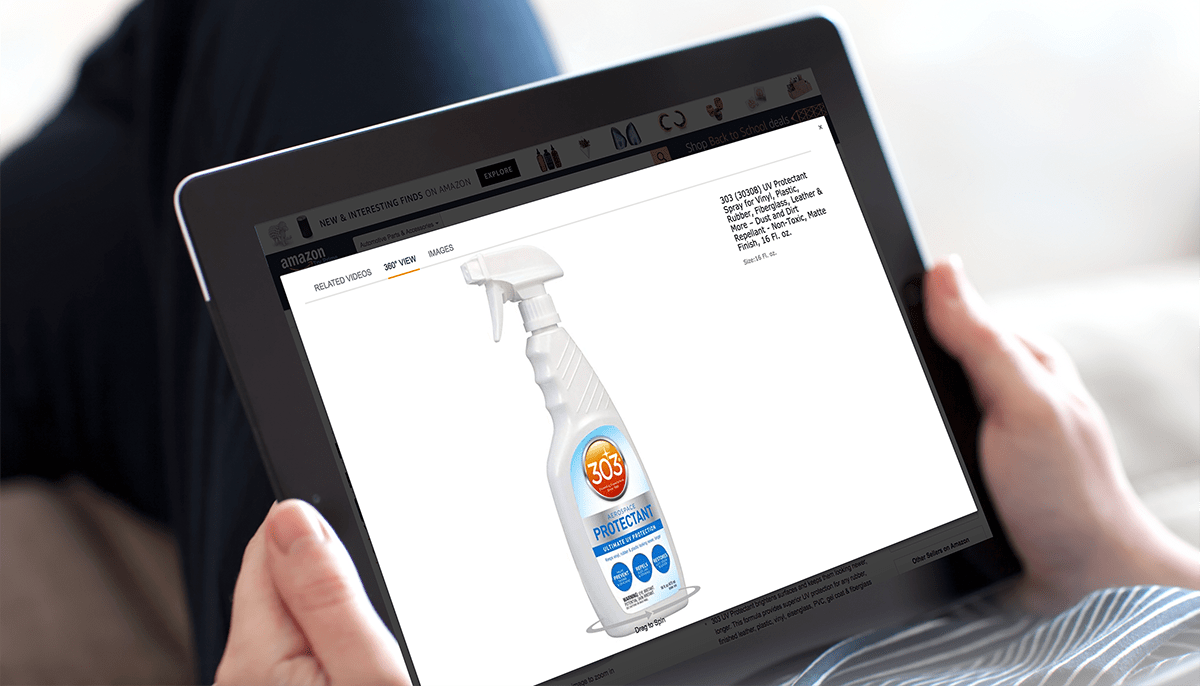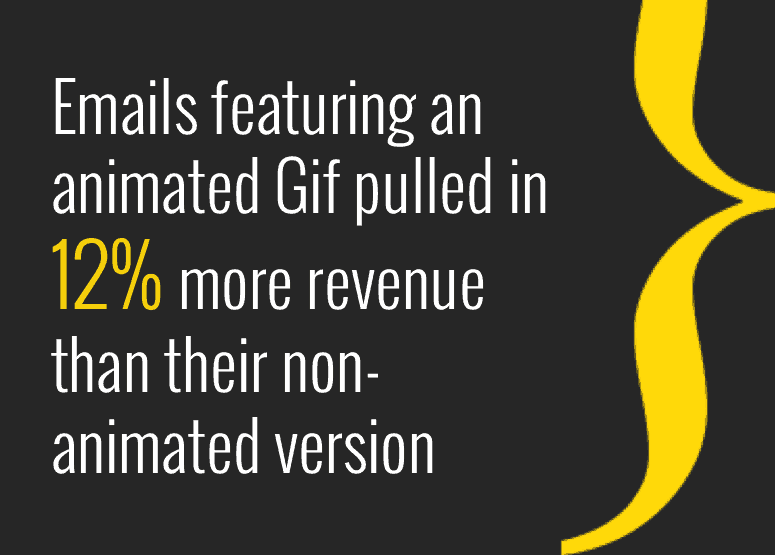The robotic photography systems and studio automation software we use at 1WorldSync allow our photographers to create massive amounts of images in a very short amount of time. If production hums along, a well-equipped set can create as many as 5,200 images per day. While the robotic system drives much of the process, it’s just one piece of the overall studio machine. It took years of experience and testing to identify what gear works best in a high-volume production environment. This post will give you insight into how we crafted our selection criteria for a vital element of the machine, lighting.
As any photographer can attest, lighting is a major component of commercial photography that can make or break a project. Because 360° & 3D product images are in motion, a great depth of field is necessary to keep them in focus. While continuous lighting such as HMIs or LEDs can be used to get the correct exposure we have found that strobes are still the best choice for this type of photography. They offer the highest light output combined with speed.
After selecting strobes, we then narrow our criteria selection on three key concerns: durability, consistency and reliability. Our spin process pushes the lights hard so durability is key. Thousands ofpops per day can take a toll on performance.
Consistency and repeatability are important considerations because when images are uploaded into a HTML5 viewer—allowing you to freely move the product in all directions—changes in light intensity can easily be observed. Older or less expensive systems utilize traditional analog circuitry to manage the capacitors used to fire the strobes. The major issue with this is that they do not always recycle to the same level, which can cause as much as a 10% shift in intensity. Digitally controlled lighting gives us the consistency we need thanks to the accurate control of microprocessors.
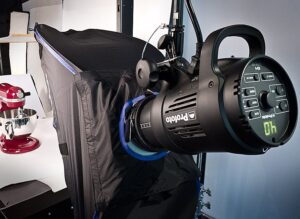
When breaking down lighting manufactures, there is a vast range of strobes available—from $250 Alien Bee heads to $13,000 Broncolor Scoros packs—making it difficult to choose the best system for your application. Profoto is a Swedish lighting manufacturer with a great reputation for solid equipment. The Profoto D1 Air monoheads are a perfect blend of power, consistency, speed, technology and cost. They are also tough as nails. Last year alone, we put some of these heads through over 500,000 cycles, which according to their specs is 150% of their life expectancy. These dependable lights kept working while keeping up to our high standards, and continue to fire flawlessly today.
Another added bonus is Profoto’s Air System, a built-in radio control that allows the user to adjust the intensity of each light individually from a PC. I’m excited to announce that in the near future, our SpinMe studio automation software will be integrating the Air System into it’s control system. This is another step in the right direction for the automated control and system integration that our studio thrives on.
There is no perfect “process” for choosing the optimal lighting system for your 360° & 3D studio, but for us, experience speaks volumes. Internally and with our clients, we have found that low budget does not pay off. The Profoto system provides the perfect mix of value and performance for our studio “bootcamp.”
